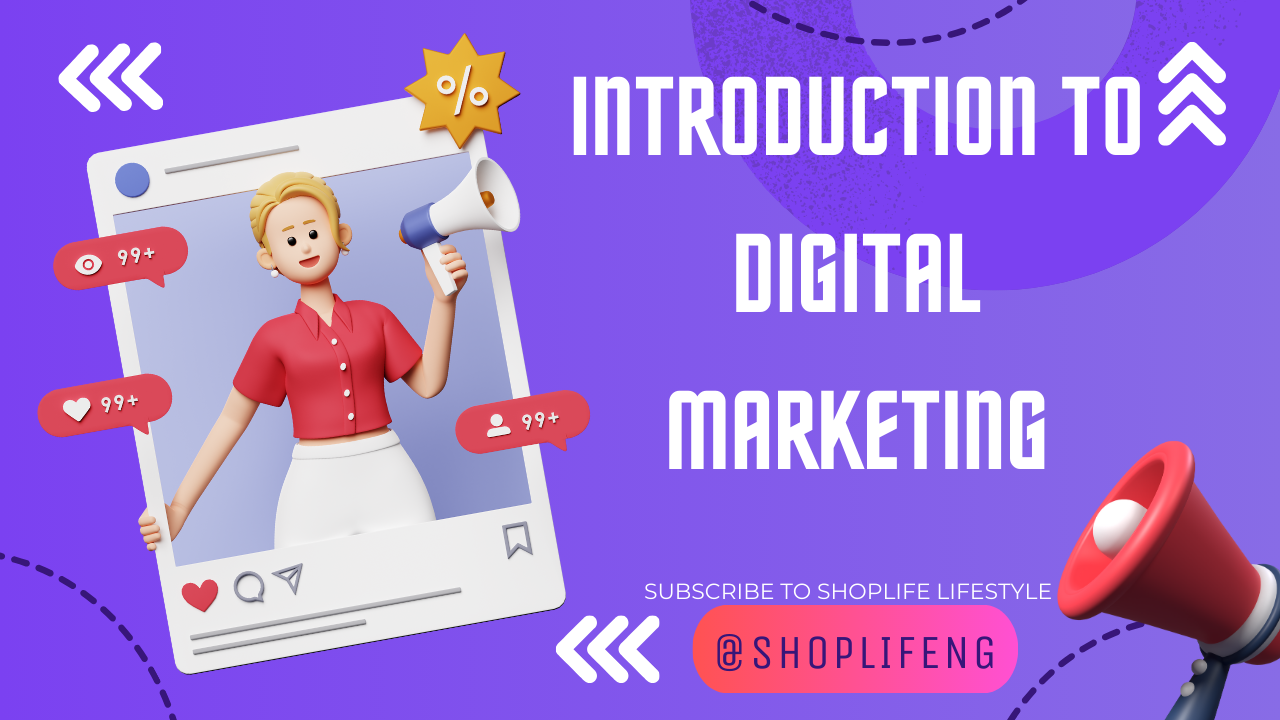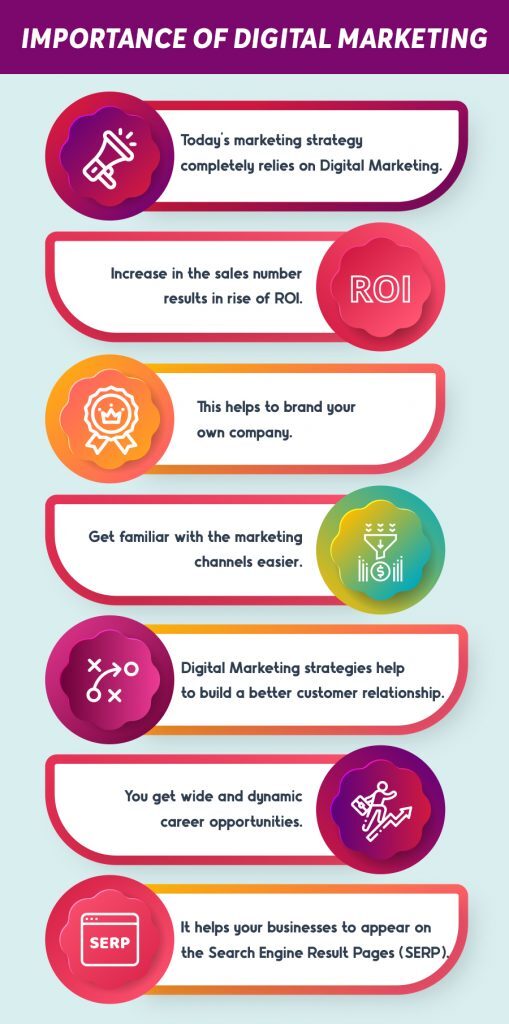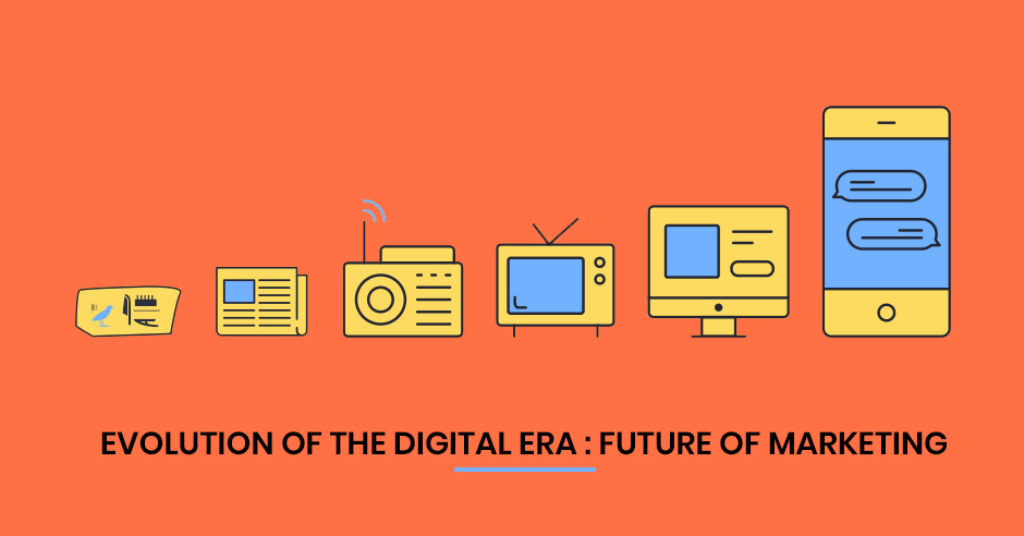
Welcome to the world of digital marketing! This course is your gateway to understanding how the internet has revolutionized the way businesses reach their audiences. We’re about to embark on an exciting journey, so buckle up and get ready to explore the dynamic landscape of digital marketing. As part of Shoplife Lifestyle Series, we want to empower Young Minds with Knowledge and Skills for a better living. So, let’s get started.
1. What is Digital Marketing?
Digital marketing is the art and science of promoting products, services, or brands through electronic media (digital media). Unlike traditional marketing, which relies on methods like print, radio, and TV, digital marketing leverages the power of the internet and electronic devices to connect with potential customers.
Imagine you’re opening a bakery shop in your town. Traditional marketing might involve putting up flyers, running a newspaper ad, or sponsoring a local event. With digital marketing, you can create a website, engage with customers on social media, send out email newsletters, and even show targeted ads to cakes and pastry lovers in your area through search engines and social media platforms. It’s all about using digital channels to reach the right people, at the right time, with the right message.
Importance of Digital Marketing
Why is digital marketing so important, you ask? Let’s break it down:

- Global Reach: With the internet, your potential audience is no longer limited by geography. You can reach people all over the world with just a few clicks. This can happen 24/7 every day of the year.
- Cost-Effective: Digital marketing is often more affordable than traditional methods, making it accessible for businesses of all sizes. Plus, you can track your spending and adjust your strategies in real-time to get the best return on investment. You can pause what is not working and add more efforts on the ones that is working.
- Targeted Marketing: Digital marketing allows you to target specific demographics, interests, and behaviors. This means your marketing efforts are more likely to reach those who are genuinely interested in what you offer.
- Measurable Results: With tools like Google Analytics and social media insights, you can track the performance of your campaigns in real-time. This data helps you understand what’s working and what’s not, so you can make informed decisions.
- Engagement and Interaction: Digital marketing enables two-way communication between businesses and consumers. You can engage with your audience through social media, respond to their inquiries instantly, and build a loyal community around your brand.
2. Evolution of Digital Marketing
Let’s take a quick journey through the history of digital marketing to see how it has evolved over the years.

The Birth of the Internet
In the early 1990s, the internet started to become accessible to the public. This was a game-changer for marketing, as it opened up new avenues for reaching consumers. 600 websites and 2 millions computers were connected to the internet in the year 1993 after Tim Barnes Lee invented the web in 1991 with the emergence of HTML technology. The first banner ad appeared in 1994, marking the beginning of online advertising.
Search Engines and SEO
As the internet grew, search engines like Yahoo and Google emerged. Businesses quickly realized the importance of appearing at the top of search results, giving birth to Search Engine Optimization (SEO). By optimizing their websites with relevant keywords and quality content, companies could attract more visitors and potential customers.
Email Marketing
Email marketing became popular in the late 1990s. Businesses started collecting email addresses and sending newsletters to keep their audience informed about products, services, and promotions. This direct line of communication proved to be incredibly effective for building relationships with customers.
Social Media Revolution
The mid-2000s brought a social media revolution. Platforms like Facebook, Twitter, and LinkedIn transformed the way people connect and share information. For marketers, social media became a goldmine for engaging with audiences, building brand awareness, and driving traffic to websites.
Mobile and Video Marketing
With the rise of smartphones in the late 2000s, mobile marketing took center stage. Marketers had to optimize their strategies for mobile devices to reach users on the go. Simultaneously, video marketing gained traction with platforms like YouTube providing a powerful medium for storytelling and brand promotion.
The Age of Big Data and AI
Today, we are in the age of big data and artificial intelligence (AI). Marketers have access to vast amounts of data, allowing them to understand consumer behavior better and personalize their marketing efforts. AI-powered tools and algorithms are helping businesses automate tasks, predict trends, and deliver more relevant content to their audience.
Conclusion
Digital marketing is an ever-evolving field, shaped by technological advancements and changing consumer behaviors. Its importance cannot be overstated, as it offers businesses unparalleled opportunities to connect with their target audience, build brand loyalty, and drive growth.
In the upcoming lessons, we’ll dive deeper into the various aspects of digital marketing, from SEO and content creation to social media and email marketing. Get ready to unlock the secrets of successful digital marketing and become a savvy marketer in the digital age!
Stay tuned and let’s get started on this exciting journey!





